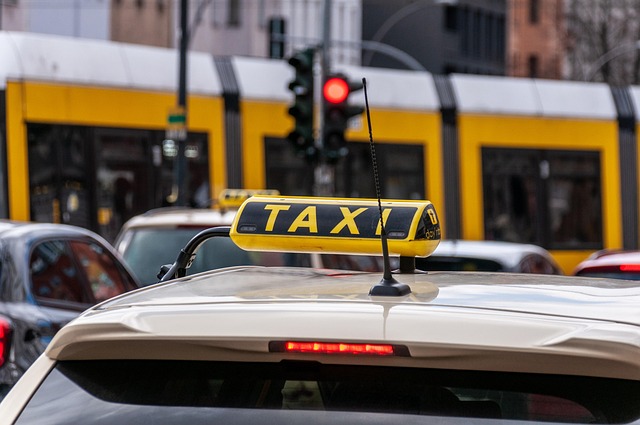Looking to register your car in California? This guide walks you through the entire process, from understanding key requirements to securing your vehicle’s registration. First, familiarize yourself with California’s car registration mandates. Next, gather essential documents for a seamless VIN (Vehicle Identification Number) verification process. After passing inspection, submit your application along with required fees at the DMV. Lastly, receive and keep your California Registration Certificate handy for future reference, especially during vin verification checks.
- Understand California Car Registration Requirements
- Gather Necessary Documents for VIN Verification
- Perform Vehicle Identification Number (VIN) Check
- Submit Application and Required Fees to DMV
- Receive Your California Registration Certificate
Understand California Car Registration Requirements

Before registering your car in California, it’s crucial to understand the state’s specific requirements. California requires all vehicles to undergo a thorough inspection to ensure they meet safety and environmental standards. This process involves a vehicle identification number (VIN) verification, which is a critical step in the registration procedure. The VIN is a unique code that identifies your car, and it plays a vital role in tracking its history and ensuring it’s roadworthy.
During the VIN inspection, you’ll need to provide proof of ownership and valid identification. A mobile vin verifier or service can be particularly useful here, as they offer convenient and quick verification right at your location. This step is essential to avoid any issues with registration and to ensure a smooth transition for your vehicle into California’s road network.
Gather Necessary Documents for VIN Verification

Before you begin the registration process, it’s crucial to gather all the essential documents for VIN verification. This includes your vehicle’s Registration Application (Form DVF 140), which can be obtained from the California Department of Motor Vehicles (DMV). Additionally, you’ll need the Certificate of Title (if applicable) and proof of insurance. The Vehicle Identification Number (VIN) is a critical piece of information that will be verified during this process, so ensure you have your VIN readily available—it’s typically located on the vehicle’s front end, driver’s side dashboard, or in the doorsill.
For a smoother experience, many individuals opt for a mobile VIN inspection or engage the services of a vin inspection expert. These options can save time and effort by having the necessary verifications conducted off-site, allowing you to focus on gathering the required documents. A reliable mobile vin verifier can visit your location and complete the verification process, ensuring your car’s registration is as hassle-free as possible.
Perform Vehicle Identification Number (VIN) Check

Before registering your car in California, it’s crucial to perform a Vehicle Identification Number (VIN) check. This step is essential for ensuring that the vehicle you’re registering is legitimate and hasn’t been reported stolen or had its identity tampered with. A mobile VIN verifier can make this process convenient by allowing you to conduct a vin inspection right from your location.
You’ll need to verify the VIN through official channels, such as using a mobile VIN inspection service that provides accurate and reliable data. This simple step safeguards against potential fraud and ensures you’re making a secure purchase or registration. Remember, proper VIN verification is key in today’s digital era where it’s easier than ever for bad actors to manipulate vehicle information.
Submit Application and Required Fees to DMV

After gathering all the necessary documents and ensuring your vehicle meets California’s requirements, it’s time to submit your application along with the required fees to the Department of Motor Vehicles (DMV). This crucial step involves filling out Form SM 481, which is the Application for Title and Registration. Along with this form, you’ll need to pay the registration fee as well as any applicable taxes and fees.
A key component of this process is the vin verification. The vehicle identification number (VIN) inspection ensures the accuracy of your car’s information, which is essential for legal and safety reasons. You can complete this through a traditional DMV visit or, for added convenience, opt for a mobile vin verifier service, allowing you to verify the VIN digitally from the comfort of your home or office.
Receive Your California Registration Certificate

Once your application is approved, the California Department of Motor Vehicles (DMV) will issue your vehicle’s registration certificate. This document is proof that your car is legally registered and insured in the state. It’s crucial to keep this certificate on hand, as you’ll need it for future transactions like selling your vehicle or renewing your registration.
Receiving your certificate involves a successful vin verification process, which ensures the accuracy of your vehicle identification number (VIN). You can complete this step online or in-person at a DMV office. Alternatively, consider utilizing a mobile vin verifier to streamline the process, offering convenient and often faster vin inspection services directly from your smartphone.
Registering a car in California involves understanding key requirements, gathering essential documents, completing a VIN verification check, submitting an application with associated fees, and finally receiving your California registration certificate. This streamlined process ensures that vehicles on California roads meet necessary standards, facilitating safer driving and easier navigation for all. Remember, proper registration is not just a legal requirement but also contributes to the overall efficiency of vehicle management in the state.
